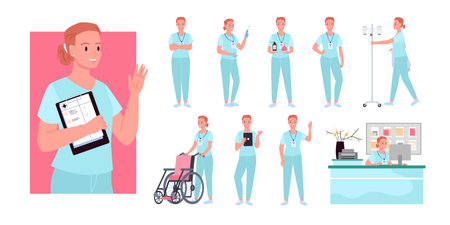1. Understanding Your Post-Surgery Restrictions
After a hip replacement surgery, its important to know and follow specific movement restrictions to help your body heal and avoid complications like hip dislocation. These precautions are standard in the U.S. and are often discussed by your doctor or physical therapist before you leave the hospital. Here’s what you need to know about common limitations and why they matter:
Key Movement Restrictions After Hip Replacement
| Restriction | What It Means | Why It Matters |
|---|---|---|
| Dont cross your legs | Avoid sitting or lying with one leg over the other | Prevents the new hip from shifting out of place (dislocation) |
| Avoid low chairs or soft couches | Sit only on firm chairs with higher seats; keep hips above knees | Reduces pressure on your new joint and makes standing up safer |
| Don’t bend your hip past 90 degrees | Avoid leaning forward too far when sitting, tying shoes, or picking things up | Keeps the artificial hip stable during early healing |
| No twisting or pivoting on your operated leg | Turn your whole body instead of twisting your hip or knee alone | Lowers risk of putting extra strain on your new joint |
Everyday Tips for Following Restrictions at Home
- Use assistive tools: Items like reachers, sock aids, and long-handled shoehorns make daily tasks easier without breaking safety rules.
- Arrange home seating: Choose sturdy chairs with armrests and avoid recliners or soft sofas that are hard to get in and out of.
- Bathroom safety: Install a raised toilet seat and grab bars if needed for extra support.
- Keep pathways clear: Remove rugs or clutter to prevent tripping as you move around with a walker or cane.
Your Recovery Journey Starts Here
Sticking to these restrictions may feel limiting at first, but they’re crucial for a safe recovery. Following your healthcare team’s advice will help you get back to daily life more quickly and confidently.
2. Creating a Safe Home Environment
After hip replacement surgery, making some changes to your home can help you move around more easily and lower your risk of falls or injuries. Here are some practical ways to set up a safe space while you recover:
Install Grab Bars and Handrails
Bathrooms are common places for slips. Installing sturdy grab bars in the shower, next to the toilet, and along hallways can give you extra support as you move around.
Remove Tripping Hazards
Loose rugs, electrical cords, and cluttered walkways can be dangerous when your balance is not steady. Clear these hazards from pathways you use most often.
| Tripping Hazard | How to Fix |
|---|---|
| Loose Rugs | Remove them or secure with non-slip pads |
| Cords/Wires | Tape them down or move them out of walkways |
| Clutter | Keep floors clear, especially in high-traffic areas |
Arrange Items Within Easy Reach
Place everyday essentials—like medications, remote controls, water bottles, and phones—on tables or shelves at waist level. This way, you won’t need to bend or stretch too much.
Sample List of Items to Keep Handy:
- Medication organizer
- TV remote
- Reading materials
- Bottle of water or snacks
- Your cell phone or medical alert device
Create a Restful Recovery Area
If possible, set up a sleeping area on the first floor of your home to avoid going up and down stairs. Make sure your bed is firm and easy to get in and out of. You may want to add extra pillows to keep your leg comfortable.
Additional Tips:
- Add nightlights in hallways and bathrooms for better visibility at night.
- Use a shower chair or bench if standing for long periods is difficult.
- If you have pets, keep them out of walking paths to prevent accidental tripping.
A few small changes can make a big difference in your safety and comfort as you heal from hip replacement surgery.

3. Managing Pain and Medication
Understanding Post-Surgery Pain Management
Pain after hip replacement surgery is common, but it can be controlled with the right strategies. Managing pain well helps you move more comfortably and speeds up your recovery. Here are some practical ways to handle pain at home:
- Use Ice Packs: Applying ice packs on your hip for 15-20 minutes several times a day can help reduce swelling and numb soreness.
- Stay Active (as recommended): Gentle movement and physical therapy exercises keep your muscles working and help prevent stiffness.
- Rest When Needed: Balance activity with enough rest to avoid overworking your new hip joint.
- Pillow Support: Use pillows to support your leg while resting or sleeping as directed by your healthcare team.
Following Your Medication Schedule
Your doctor will prescribe medications to help manage pain and prevent complications. It’s important to follow the medication schedule closely to get the best results and avoid side effects. Here’s a simple way to stay organized:
| Medication Type | Purpose | How Often to Take |
|---|---|---|
| Painkillers (Opioids or Non-opioids) | Reduces pain after surgery | As prescribed (usually every 4-6 hours at first) |
| Anti-inflammatory drugs (NSAIDs) | Lowers swelling and discomfort | Once or twice daily, as directed |
| Blood thinners | Prevents blood clots | Daily, as prescribed for a set period |
- Set Alarms or Reminders: Use your phone or a pill organizer to remember each dose.
- Avoid Skipping Doses: Taking medicine on time keeps pain under control and prevents sudden discomfort.
- Report Side Effects: Let your doctor know if you feel dizzy, nauseous, or have any unusual symptoms.
Safe Disposal of Unused Opioids or Prescription Painkillers in America
If you have leftover prescription painkillers, especially opioids, its important to dispose of them safely to protect your family and community. In the United States, there are specific guidelines for safe medication disposal:
Common American Practices for Medication Disposal
| Method | Description | Where to Find More Info |
|---|---|---|
| Taken-back Programs | Special events or permanent drop boxes where you can bring unused meds | Your local pharmacy, police station, or DEA website |
| Deterra Bags/Disposal Kits | Kits that deactivate pills so they can be thrown away safely at home | Your pharmacy or online retailers may provide these kits |
| Mixing with Undesirable Substances (if no other option) | If no take-back program is available, mix meds (not crushed) with coffee grounds or cat litter in a sealed bag before throwing them in the trash. Do not flush unless the label says it’s safe. | FDA website: Safe Disposal of Medicines |
If you’re unsure about how to dispose of your medication, ask your pharmacist—they’re happy to help keep your home safe!
4. Commitment to Physical Therapy and Activity
Why Physical Therapy Matters After Hip Replacement
Sticking with your physical therapy (PT) plan is one of the most important things you can do after hip replacement surgery in the U.S. PT helps you regain strength, flexibility, and mobility so you can get back to your daily life safely and confidently. American healthcare providers emphasize that following your therapist’s advice not only speeds up your recovery but also lowers your risk of complications, like joint stiffness or falls.
Home Exercise Tips for Everyday Progress
Your physical therapist will give you a set of exercises to do at home between appointments. These exercises are designed just for you and help you continue healing outside of the clinic. Here’s a simple table showing common home exercises and how often you might need to do them:
| Exercise | How Often | Purpose |
|---|---|---|
| Ankle Pumps | 10-20 times per hour while awake | Promotes blood flow, reduces swelling |
| Quad Sets (tightening thigh muscles) | 3 sets of 10 reps, 2-3 times daily | Strengthens thigh muscles supporting the hip |
| Gluteal Squeezes | 3 sets of 10 reps, 2-3 times daily | Builds strength in buttock muscles for stability |
| Knee Raises (seated or lying down) | As advised by your therapist | Improves hip flexibility and movement |
| Walking (with walker or cane as needed) | A few minutes every 1-2 hours while awake | Encourages safe movement and prevents stiffness |
Tip: Always follow your therapist’s instructions about which exercises are safe for your specific situation. Don’t try new movements without asking first.
Gradually Increasing Your Activity Level
It’s natural to want to return to your regular activities quickly, but it’s important to pace yourself. Most American therapists recommend a gradual approach, increasing activity only when you feel comfortable and after checking with your care team. Here’s how you might increase your activity step-by-step:
- Weeks 1-2: Focus on short walks around the house, gentle stretches, and sitting up for meals.
- Weeks 3-4: Walk a little farther each day, start light household tasks (like folding laundry), and practice going up and down a few steps if approved.
- Week 5 and beyond: Add more challenging activities as recommended by your therapist—this could include longer walks outdoors or using exercise equipment like a stationary bike.
The Role of Family and Friends in Your Recovery Journey
Your loved ones can be a big help during this time. Ask for support with transportation to PT appointments, encouragement during home exercises, and help keeping track of your progress. Many Americans find that having someone join them for walks or check-in calls helps keep them motivated.
Remember: Recovery Is a Team Effort!
Your commitment to PT and activity makes a real difference in how well—and how quickly—you recover after hip replacement surgery in America. Stay positive, be patient with yourself, and celebrate small victories along the way!
5. Recognizing Warning Signs and When to Contact Your Doctor
Knowing the Critical Symptoms After Hip Replacement Surgery
After a hip replacement, it’s important to stay alert for warning signs that could mean something isn’t right. In the U.S., your healthcare provider will want you to call them right away if you notice any serious symptoms. Here’s what you need to watch for:
Common Warning Signs to Watch For
| Symptom | What It Might Mean | What To Do |
|---|---|---|
| Fever over 101°F (38.3°C) | Possible infection | Call your doctor promptly |
| Chills or night sweats | Possible infection | Contact your healthcare provider |
| Redness, warmth, or drainage at incision site | Surgical wound infection | Notify your doctor right away |
| Increased pain or swelling in leg | Blood clot or infection | Seek medical advice quickly |
| Painful calf, redness, or swelling below the knee | Deep vein thrombosis (DVT) | Call your doctor immediately |
| Trouble breathing or chest pain | Pulmonary embolism (blood clot in lung) | Call 911 or emergency services now |
| Sudden severe hip pain, inability to move leg, or leg appears shorter/turned outward | Hip dislocation | Contact your doctor or go to the ER right away |
| Numbness or tingling in foot/leg not improving after surgery | Nerve issue or circulation problem | Let your provider know as soon as possible |
Your Next Steps: When and How to Reach Out for Help in America
If you notice any of these symptoms, don’t wait. Call your surgeon’s office or healthcare provider right away—even after regular hours, most providers have an on-call service. If you have trouble breathing, chest pain, sudden severe pain, or can’t move your leg, call 911 immediately. Don’t hesitate; quick action can make all the difference.
Helpful Tips for Communication:
- Have your surgery date and surgeon’s name handy when calling.
- Mention all symptoms clearly—don’t leave anything out.
- If you use a patient portal (like MyChart), you can send messages or photos if advised by your provider.
Your safety comes first—knowing what to watch for helps ensure a smoother recovery at home after hip replacement surgery in America.


